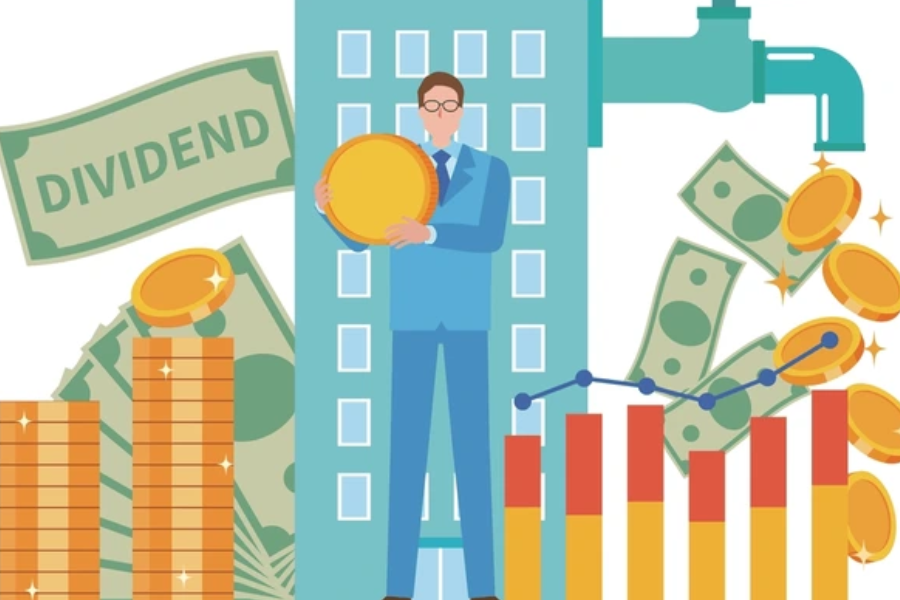Unlocking Stock Dividends: Maximizing Returns and Insights
Stock dividends are a significant aspect of investing in equities (https://onlypc.net/que-son-los-dividendos-de-acciones), representing a way for companies to share their profits with shareholders. This guide will delve into the concept of stock dividends, explaining what they are, how they work, and their impact on investors and companies. We will also explore the different forms of dividends, the factors influencing dividend payments, and strategies for investors.
What Are Stock Dividends?
Stock dividends (https://onlypc.net/que-son-los-dividendos-de-acciones) are payments made by a company to its shareholders, typically as a distribution of the company’s profits. These payments can come in two primary forms: cash dividends and stock dividends. Understanding each type will provide a clearer picture of how dividends function and their implications for investors.
a. Cash Dividends
Cash dividends are the most common type of dividend. They involve the company distributing a portion of its profits directly to shareholders in cash. The amount of the cash dividend is usually expressed on a per-share basis, such as $1 per share.
Key Points About Cash Dividends:
- Payment Frequency: Cash dividends are often paid quarterly, though some companies pay them annually, semi-annually, or on an irregular basis.
- Dividend Yield: The dividend yield is a financial ratio that shows how much a company pays out in dividends each year relative to its stock price. It is calculated as:Dividend Yield=Annual Dividends per ShareStock Price per Share×100\text{Dividend Yield} = \frac{\text{Annual Dividends per Share}}{\text{Stock Price per Share}} \times 100Dividend Yield=Stock Price per ShareAnnual Dividends per Share×100
- Tax Implications: Cash dividends are subject to taxation, and the tax rate depends on the investor’s income level and the country’s tax laws.
b. Stock Dividends
Stock dividends involve issuing additional shares of the company’s stock to shareholders rather than paying cash. For example, if a company declares a 10% stock dividend, shareholders receive 10 additional shares for every 100 shares they own.
Key Points About Stock Dividends:
- Share Dilution: Although stock dividends increase the number of shares outstanding, they do not change the overall value of the company. The value of each share typically adjusts downward to reflect the increased number of shares.
- No Immediate Cash Benefit: Unlike cash dividends, stock dividends do not provide immediate cash returns but rather increase the number of shares owned by investors.
- Tax Implications: Stock dividends are generally not taxed at the time of issuance. Taxes are typically assessed when the shares are sold, based on the capital gains realized.
How Do Stock Dividends Work?
Stock dividends work as a mechanism for companies to reward shareholders and manage their capital. Here’s how the process typically unfolds:
a. Declaration
The company’s board of directors decides to issue a dividend and announces the dividend amount and payment terms. This announcement includes:
- Dividend Amount: For cash dividends, this is the amount per share. For stock dividends, it is the percentage increase in shares.
- Record Date: The date on which shareholders must be registered to receive the dividend.
- Ex-Dividend Date: The date by which investors must own the stock to be eligible for the dividend. It is usually set one business day before the record date.
- Payment Date: The date on which the dividend is actually paid or distributed.
b. Payment
- Cash Dividends: On the payment date, cash dividends are credited to shareholders’ accounts or mailed as checks.
- Stock Dividends: On the payment date, additional shares are credited to shareholders’ accounts, increasing their total shareholding.
c. Post-Dividend Adjustments
After a stock dividend is issued, the stock price typically adjusts to reflect the increased number of shares. For example, if a company issues a 10% stock dividend, the stock price might decrease by approximately 10% to account for the additional shares.
Why Do Companies Pay Dividends?
Companies pay dividends for several reasons, each reflecting different aspects of corporate strategy and financial health:
a. Shareholder Rewards
Dividends serve as a way for companies to reward shareholders for their investment. By distributing profits, companies can attract and retain investors who are seeking regular income from their investments.
b. Signal of Financial Health
Regular dividend payments can signal a company’s strong financial health and stability. Companies that consistently pay dividends often indicate that they have a steady cash flow and are confident in their ongoing profitability.
c. Attracting Investors
Dividends can make a company’s stock more attractive to income-seeking investors, such as retirees or conservative investors, who prefer stable returns over potential capital gains.
d. Capital Allocation
Paying dividends allows companies to return excess capital to shareholders instead of reinvesting all profits back into the business. This can be a strategic decision when a company believes it has limited opportunities for profitable reinvestment.
Factors Influencing Dividend Payments
Several factors influence a company’s decision to pay dividends and the amount of dividends paid:
a. Profitability
A company’s ability to pay dividends depends on its profitability. Companies with stable and growing profits are more likely to pay regular dividends.
b. Cash Flow
Strong cash flow is essential for sustaining dividend payments. Even if a company is profitable, it must have sufficient cash reserves to distribute dividends without compromising its operations.
c. Business Cycle
Companies may adjust dividend payments based on the business cycle. During periods of economic downturns or financial instability, companies might reduce or suspend dividends to preserve cash.
d. Debt Levels
Companies with high levels of debt may prioritize debt repayments over dividend payments. High debt levels can limit a company’s ability to pay dividends if it needs to allocate funds to interest and principal repayments.
e. Growth Opportunities
Companies with significant growth opportunities may choose to reinvest profits into expansion and development rather than paying dividends. High-growth companies often prefer to use profits for research, development, and capital expenditures.
Dividend Policies and Strategies
Companies may adopt different dividend policies based on their financial goals and market conditions. Common dividend policies include:
a. Stable Dividend Policy
A stable dividend policy involves paying a consistent dividend amount, regardless of fluctuations in earnings. This approach provides shareholders with predictable income and reflects the company’s commitment to maintaining a steady return.
b. Residual Dividend Policy
Under a residual dividend policy, dividends are paid from the remaining profits after all profitable investment opportunities have been funded. This policy prioritizes reinvestment in growth projects before distributing any remaining profits as dividends.
c. Progressive Dividend Policy
A progressive dividend policy involves increasing the dividend amount over time, reflecting the company’s growth and profitability. This approach is often used by companies that have stable and predictable earnings.
d. Special Dividends
Special dividends are one-time payments made in addition to regular dividends. They are typically issued when a company has excess cash or has achieved a significant milestone.
Impact of Dividends on Investors
Dividends can have various impacts on investors, including:
a. Income Generation
Dividends provide a regular income stream for investors, particularly beneficial for retirees or those seeking passive income.
b. Total Return
Dividends contribute to an investor’s total return, which includes both capital gains and dividend income. For long-term investors, dividends can significantly enhance overall investment returns.
c. Investment Strategy
Dividend-paying stocks can be part of a value or income-focused investment strategy. Investors seeking steady income and lower volatility may prefer dividend-paying stocks.
d. Reinvestment
Many investors choose to reinvest dividends by purchasing additional shares, which can compound returns over time through the process of dividend reinvestment.
Risks and Considerations
While dividends can be beneficial, investors should also consider potential risks:
a. Dividend Cuts
Companies may reduce or eliminate dividends if they face financial difficulties or need to conserve cash. Dividend cuts can signal underlying issues and negatively impact stock prices.
b. Dividend Taxation
Dividends are subject to taxation, which can affect the net income received by investors. Tax rates on dividends vary based on jurisdiction and the investor’s tax bracket.
c. Market Fluctuations
Dividend-paying stocks can still be subject to market fluctuations and volatility. Investors should assess the overall financial health of the company and market conditions before relying solely on dividends for income.
Conclusion
Stock dividends (https://onlypc.net/que-son-los-dividendos-de-acciones) represent a crucial aspect of equity investing, offering a way for companies to distribute profits and reward shareholders. Understanding the different types of dividends, the factors influencing dividend payments, and their impact on investors can help make informed investment decisions.
Whether you are an income-seeking investor or someone interested in the broader financial health of companies, dividends provide valuable insights and opportunities. By considering the various dividend policies and staying informed about market conditions, investors can navigate the complexities of dividend investing and potentially enhance their overall investment returns.






